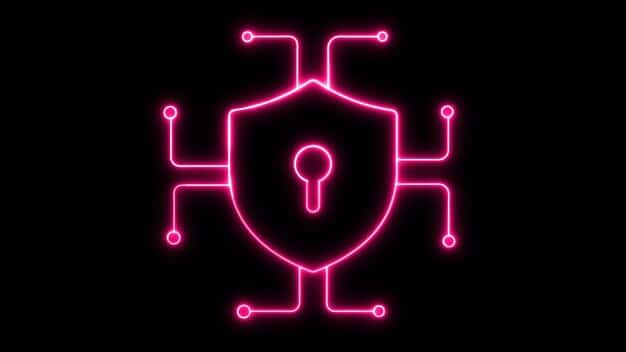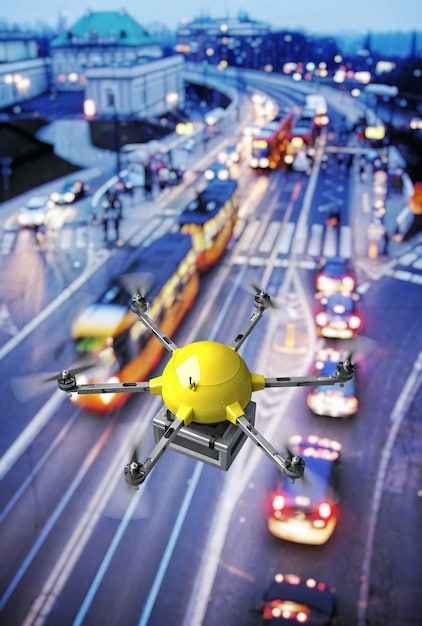Smart City Infrastructure: US Tech Standards by 2026 Revealed

Achieving resilient and efficient urban environments, US cities by 2026 are set to adopt advanced technological standards for smart city infrastructure, embracing integrated data platforms, IoT, AI, and robust cybersecurity protocols to enhance livability, sustainability, and economic growth.
As urban centers in the United States continue to evolve, the concept of a smart city moves beyond mere buzzwords, becoming a tangible vision for the future. The question of Smart City Infrastructure: What New Tech Standards Will US Cities Adopt by 2026? is not just academic; it probes the very operational fabric of our future urban lives, from public safety to environmental sustainability.
The Evolving Landscape of Urban Technology
The push towards smarter cities is gaining significant momentum across the United States. This evolution is driven by various factors, including the need for greater operational efficiency, improved public services, and enhanced quality of life for residents. As current infrastructure ages and urban populations grow, technology offers pragmatic solutions to complex challenges.
Cities are increasingly looking to leverage digital innovations to manage resources more effectively, respond to emergencies more swiftly, and create more inclusive and sustainable environments. This foundational shift requires a concerted effort to establish common technological standards, ensuring interoperability, security, and scalability across diverse urban applications. Without these agreed-upon frameworks, smart city initiatives risk operating in isolated silos, hindering their overall impact and long-term viability. The journey to 2026 involves significant investment in both physical and digital infrastructure, a commitment to data-driven decision-making, and a collaborative spirit among various stakeholders, including government, industry, and academia. This transformation is not merely about adopting isolated gadgets but weaving a complex tapestry of interconnected systems that work in harmony to serve the urban populace.
Key Drivers for Standard Adoption
Several critical factors propel US cities toward the adoption of new smart tech standards. Demographic shifts, such as increasing urbanization and an aging population, demand more responsive and accessible services. Environmental concerns, including climate change and resource scarcity, necessitate sustainable solutions, often facilitated by smart technologies. Economic competitiveness also plays a significant role, as cities vie to attract businesses and talent by offering cutting-edge infrastructure and a high quality of life. Furthermore, heightened expectations from citizens for efficient and transparent governance are pushing municipalities to embrace digital transformation.
- Urbanization Trends: Growing populations put stress on existing infrastructure, demanding smarter management.
- Environmental Imperatives: Smart tech provides tools for efficient energy consumption, waste management, and pollution reduction.
- Economic Competitiveness: Cities with advanced infrastructure attract investment and skilled labor.
- Citizen Expectations: Demand for responsive, accessible, and transparent public services.
Ultimately, the goal is to create resilient cities that can adapt to future challenges, foster innovation, and provide equitable opportunities for all residents. This holistic approach means that standard adoption isn’t just about technical specifications; it’s about enabling a future where technology serves humanity in a way that is both efficient and ethically sound.
Core Pillars of Next-Generation Smart City Infrastructure
The smart city of tomorrow will be built upon several interconnected technological pillars, each contributing to a more integrated and responsive urban ecosystem. By 2026, US cities are anticipated to solidify standards within these foundational areas, creating a robust framework for innovation and development. These pillars are not independent but rather interlinked, deriving their strength from their ability to share data and operate cohesively. The focus will be on open standards that encourage innovation and prevent vendor lock-in, crucial for the long-term adaptability of urban systems.
High-Speed Connectivity and IoT Integration
Central to any smart city initiative is ubiquitous, high-speed connectivity. This isn’t just about faster internet for homes and businesses, but about enabling a network that supports billions of interconnected devices. 5G technology, with its low latency and high bandwidth, is expected to become the backbone for various smart city applications, from intelligent transportation systems to remote healthcare. Complementing 5G is the Internet of Things (IoT), a vast network of sensors and devices embedded throughout the urban environment. These sensors will collect real-time data on everything from traffic flow and air quality to waste levels and utility consumption.
The standardization of IoT protocols will be crucial. This ensures that devices from different manufacturers can communicate seamlessly, feeding data into centralized platforms for analysis and action. The adoption of robust and secure IoT standards is paramount to prevent fragmentation and foster an environment where data can flow freely and securely, enabling actionable insights that benefit citizens. The sheer volume of data generated by these connected devices necessitates equally robust data processing capabilities.
Data Platforms and Artificial Intelligence (AI)
Raw data, no matter how abundant, holds little value without the means to process and interpret it. By 2026, US cities will prioritize the adoption of standardized data platforms designed to aggregate, store, and analyze vast quantities of urban data. These platforms must be scalable, secure, and interoperable, allowing different city departments and even external partners to share and utilize information effectively. Artificial intelligence (AI) and machine learning (ML) will serve as the analytical engines, transforming raw data into actionable insights. AI algorithms will be used for predictive policing, optimizing traffic signals, forecasting energy demand, and even identifying maintenance needs for public infrastructure before failures occur.
Consider the potential for AI in optimizing public transport routes in real-time based on demand, or in managing energy grids to balance supply and demand dynamically. The ethical implications and biases inherent in AI algorithms will also be a major focus, necessitating standards that promote fairness, transparency, and accountability in their deployment. The development of common data models and APIs (Application Programming Interfaces) will be key to unlocking the full potential of these platforms, fostering a vibrant ecosystem of third-party developers building innovative applications.
Cybersecurity and Data Privacy
As cities become more digitized and interconnected, the threat of cyberattacks grows exponentially. Protecting critical infrastructure, sensitive citizen data, and public services from malicious actors will be a top priority. Standards for cybersecurity in smart cities will encompass a multi-layered approach, including robust encryption protocols, intrusion detection systems, and regular security audits. Data privacy will be equally critical, especially as more personal data is collected and processed.
Strict adherence to data privacy regulations, such as those inspired by GDPR (General Data Protection Regulation) or new US-specific frameworks, will be non-negotiable. Citizens must be assured that their data is collected, stored, and used responsibly, with clear consent mechanisms and robust anonymization techniques where appropriate. The development of privacy-by-design principles will be integrated into the very fabric of smart city solutions, ensuring that security and privacy are not afterthoughts but fundamental components. The vulnerability surface expands with every connected device, making a unified, proactive cybersecurity strategy imperative.

Sector-Specific Standards within Smart Cities
While overarching technological pillars form the foundation, specific sectors within smart cities will also see the adoption of tailored standards to address their unique challenges and opportunities. These sector-specific standards ensure that the broader technological framework translates into tangible improvements for day-to-day urban living. The integration of these vertical solutions into a horizontal platform is the ultimate goal, allowing for cross-sector data sharing and holistic urban management.
Intelligent Transportation Systems (ITS)
Traffic congestion, pollution from vehicles, and road safety are persistent urban challenges. Intelligent Transportation Systems (ITS) leverage smart technology to address these issues. By 2026, standards for ITS are expected to focus on vehicle-to-everything (V2X) communication, enabling vehicles to communicate with each other, with infrastructure (V2I), and with pedestrians (V2P). This will pave the way for more efficient traffic flow, real-time navigation, and ultimately, autonomous vehicles.
Consider smart traffic lights that adapt to real-time traffic conditions, or public transportation systems that use AI to optimize routes and schedules. The standards will also address data sharing protocols for traffic data, enabling cities to identify congestion hotspots, manage parking, and plan urban development more effectively. Furthermore, safety standards for autonomous vehicle integration into mixed traffic environments will be crucial, building public trust and ensuring seamless adoption. The interoperability of different ITS components will be key to creating a truly responsive and adaptive transportation network.
- V2X Communication: Enabling real-time communication between vehicles and infrastructure for enhanced safety and efficiency.
- Smart Traffic Management: AI-powered signals and sensors to optimize traffic flow and reduce congestion.
- Public Transit Optimization: Using data to improve routes, schedules, and passenger experience.
- Autonomous Vehicle Integration: Standards for safe and reliable deployment of self-driving cars.
Smart Energy Grids and Utilities
Energy consumption is a major concern for cities, both economically and environmentally. Smart energy grids utilize advanced technology to manage the generation, distribution, and consumption of electricity more efficiently. Standards in this area will include protocols for smart meters, which provide real-time data on energy usage, enabling dynamic pricing and empowering consumers to make informed choices. They will also focus on the integration of renewable energy sources, such as solar and wind, into the existing grid infrastructure.
Furthermore, standards for energy storage solutions and demand-response programs, which encourage consumers to reduce energy use during peak demand periods, will be critical. Water and waste management utilities will also see similar advancements, with sensors monitoring leakage, pollution levels, and waste bin fill rates. The aim is to create resilient, sustainable utility networks that can withstand disruptions and minimize environmental impact. The move towards decentralized energy production also necessitates new standards for managing microgrids and distributed energy resources.
Public Safety and Emergency Services
Smart city technologies offer significant potential for enhancing public safety and improving emergency response times. By 2026, standards will likely emerge for integrated incident management platforms, allowing police, fire, and emergency medical services to share information and coordinate responses more effectively. This could involve leveraging real-time data from a network of sensors, drones, and connected cameras.
Consider smart streetlights equipped with sensors that can detect gunshots and automatically alert law enforcement, or AI-powered video analytics that can identify suspicious activities in public spaces. However, the deployment of such technologies must be balanced with strong ethical guidelines and privacy protections to prevent surveillance overreach. Standards will also address data encryption, access controls, and transparent usage policies to build public trust. The focus is on proactive safety measures and rapid, coordinated response during crises, enhancing overall urban resilience.

Governance, Funding, and Collaboration Frameworks
Beyond technological specifications, the successful adoption of smart city standards by 2026 will heavily depend on robust governance models, innovative funding mechanisms, and effective collaboration across diverse stakeholders. Technology alone cannot build a smart city; it requires a concerted human effort anchored in strategic planning and partnerships. The complexity of urban systems demands a multi-faceted approach, moving beyond traditional siloed approaches to municipal management.
Standardization Bodies and Regulatory Impact
The development and adoption of smart city standards is not a unilateral effort by individual cities. It involves collaboration with various national and international standardization bodies. Organizations like the National Institute of Standards and Technology (NIST), IEEE, and ISO will play crucial roles in developing consensus-based technical standards. Furthermore, federal agencies will increasingly provide guidance and frameworks, ensuring alignment with national objectives.
The regulatory environment will also evolve to support smart city initiatives, addressing issues such as data governance, cybersecurity liability, and the ethical use of AI. This might involve updating zoning laws to accommodate new infrastructure, or establishing legal frameworks for data sharing agreements between public and private entities. The goal is to create a predictable and supportive regulatory landscape that encourages innovation while safeguarding public interests. Engaging with these bodies and understanding the regulatory implications is critical for cities planning their smart infrastructure roadmap.
Funding Models and Public-Private Partnerships
Building comprehensive smart city infrastructure requires substantial investment. Traditional municipal budgets often fall short, necessitating innovative funding models. Public-private partnerships (PPPs) are expected to become the preferred mechanism, leveraging private sector capital, expertise, and technological capabilities. These partnerships can take various forms, from concession agreements to performance-based contracts.
Beyond PPPs, cities will explore grants from federal programs, green bonds, and even impact investment funds. The focus will be on investments that demonstrate clear economic, social, and environmental returns, attracting a wider range of investors. The financial sustainability of smart city projects will be paramount, moving away from one-off solutions to long-term, self-sustaining models. Mechanisms for revenue generation from smart services, such as data analytics or specialized applications, will further enhance funding viability.
Citizen Engagement and Inclusive Development
A truly smart city is not just technologically advanced; it is also equitable and inclusive. The adoption of new tech standards must involve significant citizen engagement to ensure that solutions address real community needs and concerns. This means moving beyond top-down mandates to a participatory approach where residents have a voice in shaping their urban future. Digital literacy programs, public workshops, and accessible feedback mechanisms will be essential.
Furthermore, smart city developments must guard against creating a “digital divide,” ensuring that technological advancements benefit all segments of the population, not just the privileged few. Standards around digital accessibility, equitable access to broadband, and inclusive design principles will be important. The ethical implications of data collection and AI deployment, particularly concerning biases and privacy, require ongoing dialogue and transparent governance. A proactive approach to addressing these social dimensions will be key to building trust and fostering widespread adoption of smart city technologies.
| Key Area | Brief Description |
|---|---|
| ⚡️ Connectivity | 5G and IoT integration for vast, real-time data flows. |
| 📊 Data & AI | Standardized platforms and AI for urban data analysis. |
| 🔒 Security & Privacy | Robust cybersecurity and data privacy regulations. |
| 🛣️ ITS & Energy | V2X communication and smart grid integration. |
Frequently Asked Questions About Smart City Infrastructure
A smart city integrates technology and innovative solutions to enhance urban services and quality of life. Standards are crucial for ensuring interoperability between disparate systems, promoting security, and allowing for scalability across various urban applications. Without common standards, cities face fragmented systems that are difficult to manage, costly to maintain, and limit the full potential of integrated data for improved decision-making and citizen services.
By 2026, 5G is expected to be a primary enabler for smart city infrastructure. Its high bandwidth and low latency are essential for supporting the massive number of IoT devices and real-time data streams needed for applications like autonomous vehicles, smart traffic management, and remote healthcare. It facilitates the instant communication crucial for critical urban systems, allowing for faster response times and more efficient resource allocation across the city network.
AI will be fundamental in transforming raw urban data into actionable insights. By 2026, AI will power predictive analytics for public safety, optimize energy consumption, and manage traffic flow dynamically. It will help cities anticipate problems before they arise, enabling proactive intervention and resource optimization. Ethical considerations, including bias and transparency, will also be integrated into AI deployment standards to ensure equitable outcomes.
Cybersecurity and data privacy are top priorities given the sensitive nature of urban data. Standards will encompass robust encryption, intrusion detection, and regular security audits for all connected systems. Data privacy regulations will be strictly enforced, incorporating principles like privacy-by-design, transparent consent, and data anonymization. The goal is to build citizen trust by ensuring that personal and operational data is protected from cyber threats and used responsibly.
Public-Private Partnerships are collaborations between government entities and private companies to fund, build, and operate smart city infrastructure. These partnerships are crucial for leveraging private sector capital, technological expertise, and innovation to overcome municipal budget limitations. By 2026, PPPs are expected to be a dominant model for smart city projects, enabling faster deployment and more sustainable management of complex urban technologies, shared risks, and benefits between parties.
The Path Forward for US Smart Cities
The journey toward truly smart cities in the United States by 2026 is an ambitious one, driven by technological innovation and a commitment to improving urban life. The adoption of new tech standards across connectivity, data platforms, cybersecurity, and various sectoral applications will serve as the bedrock for this transformation. Success hinges not just on technological prowess but also on effective governance, sustainable funding models, and, crucially, inclusive citizen engagement. As cities embrace these evolving standards, they lay the groundwork for more resilient, efficient, and livable environments, ensuring that technology serves as a powerful enabler for a better urban future for all.





